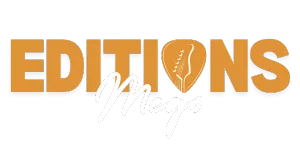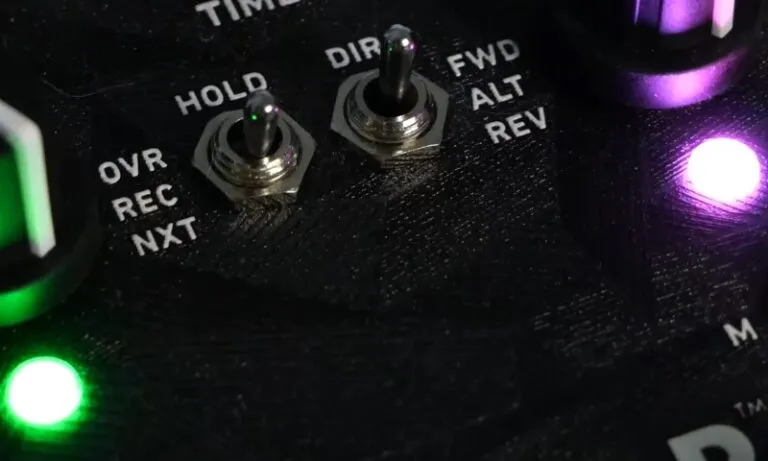Starting your punk rock guitar journey can be both exciting and accessible. Punk music thrives on simplicity and raw energy, making it perfect for beginners.
With just a few essential chord progressions, you can play iconic songs by bands like the Ramones, Green Day, and the Sex Pistols.
The secret lies in the powerful, easy-to-learn power chords that deliver punch and attitude. Get ready to explore classic riffs and experience the thrill of punk music as you master the foundational progressions that have defined the genre.
- B5 – E5 – F#5 (Used in “Blitzkrieg Bop” by the Ramones)
- G5 – D5 – Em – C5 (From “When I Come Around” by Green Day)
- D – G (Featured in “Should I Stay or Should I Go” by The Clash)
- G#5 – C#5 – A5 – C5 – D5 – B5 – D5 – E5 (Progression from “Lithium” by Nirvana)
- G5 – F5 – E5 – D5 – C5 (Intro to “Anarchy in the U.K.” by the Sex Pistols)
- G – C – D (Chords used in “Story of My Life” by Social Distortion)
- E5 – B5 – C#5 – G#5 – A – E5 – B5 (Verse progression in “Basket Case” by Green Day)
- E – A – E – C# – A – B – E (Riff from “California Sun” by the Ramones)
Table of Contents
Toggle1. B5 – E5 – F#5 (Used in “Blitzkrieg Bop” by the Ramones)
Punk rock guitar playing thrives on simplicity, and the progression in “Blitzkrieg Bop” by the Ramones is a classic example. The song revolves around three fundamental power chords: B5, E5, and F#5.
Explanation of the Chords
- B5: Place your index finger on the second fret of the A string. Use your ring finger on the fourth fret of the D string and your pinky on the fourth fret of the G string. Only play these three strings.
- E5: Move your fingers to the second fret of the D string for your index and use your ring and pinky fingers on the fourth fret of the G and B strings. Strum only these strings.
- F#5: Slide the B5 shape up two frets. Your index finger will be on the fourth fret of the A string, with the other fingers maintaining their positions.
Focus on using strong downstrokes to keep the rhythm aggressive. Maintaining consistent timing is key to mastering the punk feel. Practice switching between these chords until the transitions are smooth.
Also – Check out the most popular Classic Country Chord Progressions
2. G5 – D5 – Em – C5 (From “When I Come Around” by Green Day)
Green Day’s “When I Come Around” features a slightly more complex yet still beginner-friendly chord progression. This song uses four power chords: G5, D5, Em, and C5.
Explanation of the Chords
- G5: Place your index finger on the third fret of the low E string and your ring and pinky fingers on the fifth fret of the A and D strings. Only play the three lowest strings.
- D5: Move your index finger to the fifth fret of the A string. Your ring and pinky fingers should be on the seventh fret of the D and G strings. Play just these three strings.
- Em: Barre the second fret with your index finger across all strings except the highest one. Use your middle, ring, and pinky fingers to form the shape of a minor chord but avoid strumming the highest string.
- C5: Slide the G5 shape down so your index finger is on the third fret of the A string. Keep your ring and pinky fingers on the fifth fret of the D and G strings.
The progression involves smooth transitions between these chords, focusing on even downstrokes and steady rhythm. The Em chord adds a minor touch to the otherwise power-chord-heavy punk sound, creating an interesting variation while keeping the raw energy.
3. D – G (Featured in “Should I Stay or Should I Go” by The Clash)
“Should I Stay or Should I Go” by The Clash is another punk classic that keeps things simple and fun to play.
This song utilizes open chords, which are slightly different from power chords but equally essential for any guitarist.
Explanation of the Chords
- D: Place your index finger on the second fret of the G string, your middle finger on the second fret of the high E string, and your ring finger on the third fret of the B string. Strum only the bottom four strings to play the D chord.
- G: Position your index finger on the second fret of the A string, your middle finger on the third fret of the low E string, and your ring finger on the third fret of the high E string. Strum all six strings for a full G chord.
The key to playing this progression is maintaining a consistent rhythm. Use a simple strumming pattern with downstrokes and occasional upstrokes to match the song’s energy. The open chords add a rich, full sound and are a refreshing change from the heavy use of power chords in punk music.
4. G#5 – C#5 – A5 – C5 – D5 – B5 – D5 – E5 (Progression from “Lithium” by Nirvana)
Nirvana’s “Lithium” introduces a more complex power chord progression, perfect for expanding your punk guitar skills.
Explanation of the Chords
- G#5: Place your index finger on the fourth fret of the low E string and your ring and pinky fingers on the sixth fret of the A and D strings. Strum only these three strings.
- C#5: Slide your hand up so your index finger is on the fourth fret of the A string, with your ring and pinky fingers on the sixth fret of the D and G strings.
- A5: Move your index finger to the fifth fret of the low E string, with your ring and pinky fingers on the seventh fret of the A and D strings.
- C5: Slide your hand down so your index finger is on the third fret of the A string, with your ring and pinky fingers on the fifth fret of the D and G strings.
- D5: Move your index finger to the fifth fret of the A string, keeping the same finger positioning as before.
- B5: Slide your hand down to the second fret of the A string for this chord.
- D5 and E5: Play D5 as before, then slide up two frets to play E5.
The trick is to maintain a smooth flow between each chord while keeping the rhythm steady. The shifting dynamics of the song make it important to adjust your strumming intensity.
5. G5 – F5 – E5 – D5 – C5 (Intro to “Anarchy in the U.K.” by the Sex Pistols)
The Sex Pistols’ “Anarchy in the U.K.” features a powerful and straightforward progression.
Explanation of the Chords
- G5: Place your index finger on the third fret of the low E string and your ring and pinky fingers on the fifth fret of the A and D strings.
- F5: Slide your hand down so your index finger is on the first fret of the low E string, keeping the same shape.
- E5: Move your index finger to the open E string, with your ring and pinky fingers on the second fret of the A and D strings.
- D5: Place your index finger on the fifth fret of the A string, with your ring and pinky fingers on the seventh fret of the D and G strings.
- C5: Slide your hand down to the third fret of the A string, keeping the same finger positioning.
Focus on keeping your strumming aggressive and energetic, emphasizing downstrokes to bring out the song’s rebellious tone.
6. G – C – D (Chords Used in “Story of My Life” by Social Distortion)
Social Distortion’s “Story of My Life” is a classic punk rock anthem with a simple progression using open chords.
Explanation of the Chords
- G: Place your index finger on the second fret of the A string, your middle finger on the third fret of the low E string, and your ring finger on the third fret of the high E string. Strum all six strings.
- C: Move your index finger to the first fret of the B string, your middle finger to the second fret of the D string, and your ring finger to the third fret of the A string. Strum only the bottom five strings.
- D: Position your index finger on the second fret of the G string, your middle finger on the second fret of the high E string, and your ring finger on the third fret of the B string. Strum only the bottom four strings.
Use a steady strumming pattern, emphasizing downstrokes to maintain the punk feel.
7. E5 – B5 – C#5 – G#5 – A – E5 – B5 (Verse Progression in “Basket Case” by Green Day)
Green Day’s “Basket Case” features a catchy progression using power chords that fit perfectly with the song’s upbeat tempo.
Explanation of the Chords
- E5: Play the open E string, with your ring and pinky fingers on the second fret of the A and D strings.
- B5: Place your index finger on the second fret of the A string, with your ring and pinky fingers on the fourth fret of the D and G strings.
- C#5: Slide your hand up to the fourth fret of the A string, keeping the same shape.
- G#5: Move your index finger to the fourth fret of the low E string, with your ring and pinky fingers on the sixth fret of the A and D strings.
- A: Place your index finger on the second fret of the D, G, and B strings. Strum these three strings.
- E5 and B5: Repeat the first two chords to complete the progression.
Play with consistent downstrokes and a tight rhythm to capture the song’s energetic vibe.
8. E – A – E – C# – A – B – E (Riff from “California Sun” by the Ramones)
“California Sun” by the Ramones brings a fun and surf-inspired punk riff using a mix of power and barre chords.
Explanation of the Chords
- E: Play the open E string, with your middle finger on the first fret of the G string and your index finger on the first fret of the D string.
- A: Place your index finger across the second fret of the D, G, and B strings. Strum these three strings.
- C#: Position your index finger on the fourth fret of the A string, with your ring and pinky fingers on the sixth fret of the D and G strings.
- B: Slide your hand down to the second fret of the A string, keeping the same shape.
- E: Finish with the open E chord to complete the progression.
Strum with a bouncy rhythm, emphasizing the upbeat feel that makes this song a punk rock classic.
Basic Strumming Techniques for Punk Songs
The right strumming pattern can transform simple chords into high-energy punk rock anthems. Punk music is all about speed, aggression, and relentless downstrokes.
- All Downstrokes: Punk guitarists often rely heavily on downstrokes for a more aggressive and punchy feel. The key is to keep your wrist loose but controlled to maintain speed. Songs like “Blitzkrieg Bop” by the Ramones are perfect examples of this technique.
- Palm Muting: Adding palm muting can change the dynamics of a song, making the verses quieter and more rhythmic while keeping the choruses loud and powerful. Place the side of your picking hand lightly on the strings near the bridge to achieve this.
- Fast, Even Rhythms: Consistency is vital. Practicing with a metronome can help you maintain a steady tempo. Most punk songs are played in 4/4 time, so work on even eighth-note strumming to stay in sync with the beat.
- Upstrokes for Variation: While downstrokes dominate punk music, mixing in occasional upstrokes can add a bit of variety to your playing. Songs like “American Idiot” by Green Day use this to break up the rhythm.
How to Add Distortion for a True Punk Sound
- Choose the Right Amp Settings: Start by cranking up the gain to a high level. Set the treble and bass knobs to your liking, but keep the mids slightly lower for a more aggressive tone. Every amp is different, so spend some time experimenting to find what works best for your setup.
- Pedals and Effects: If your amp does not have built-in distortion, a simple distortion or overdrive pedal will do the trick. Popular pedals like the Boss DS-1 are commonly used in punk music. Keep it straightforward—punk does not need fancy effects.
- Adjust Your Guitar’s Volume and Tone: Set your guitar’s volume knob to maximum to drive the amp hard, and experiment with the tone knob to fine-tune the sound. For most punk songs, you will want a bright, cutting tone that slices through the mix.
- Use Bridge Pickup: For a sharper and more aggressive tone, use your guitar’s bridge pickup. It gives you the punch needed to stand out, especially in fast and loud punk songs.
Last Words
The simplicity and raw energy of punk make it an ideal genre for beginners, allowing you to quickly learn essential techniques and iconic songs. As you practice these power chord progressions, strumming patterns, and techniques, remember that the heart of punk lies in its attitude and authenticity.
Do not hesitate to experiment with your sound and develop your unique style. The beauty of punk is that it encourages creativity and individuality. Whether you are jamming with friends, playing solo, or writing your own music, let the spirit of punk inspire you. Keep practicing, have fun, and most importantly, rock on!
Related Posts:
- 18 Classic Country Chord Progressions Every…
- How to Combine E Diminished Voicings With Other…
- How to Play the D7 Guitar Chord - A Beginner’s Guide
- Top 13 Drum Types for Beginners - Guide to Get You Started
- Top 10 Easy Guitar Solos for Beginners to Master
- Most Important Guitar Chords for Beginners: Paving…












